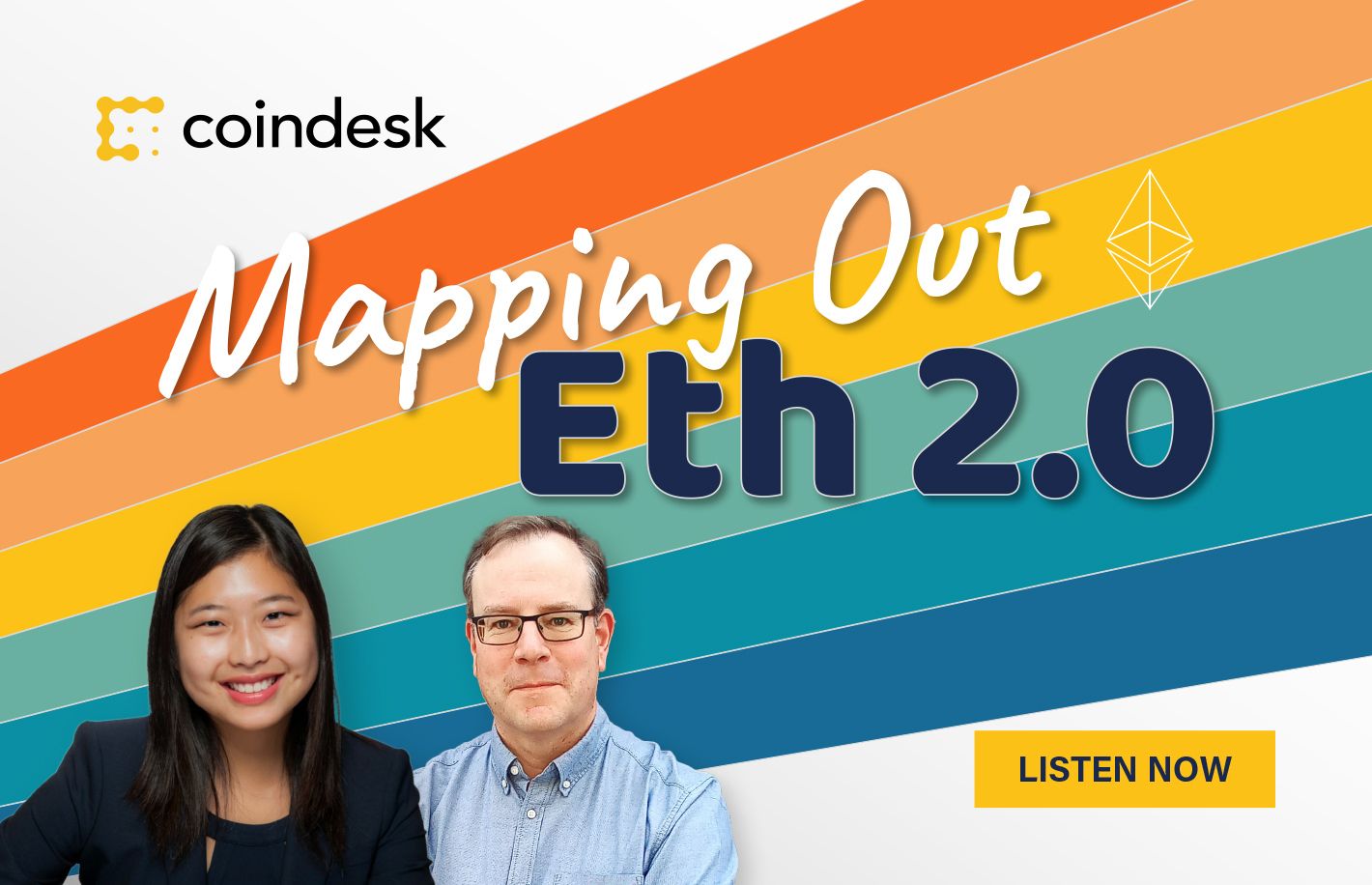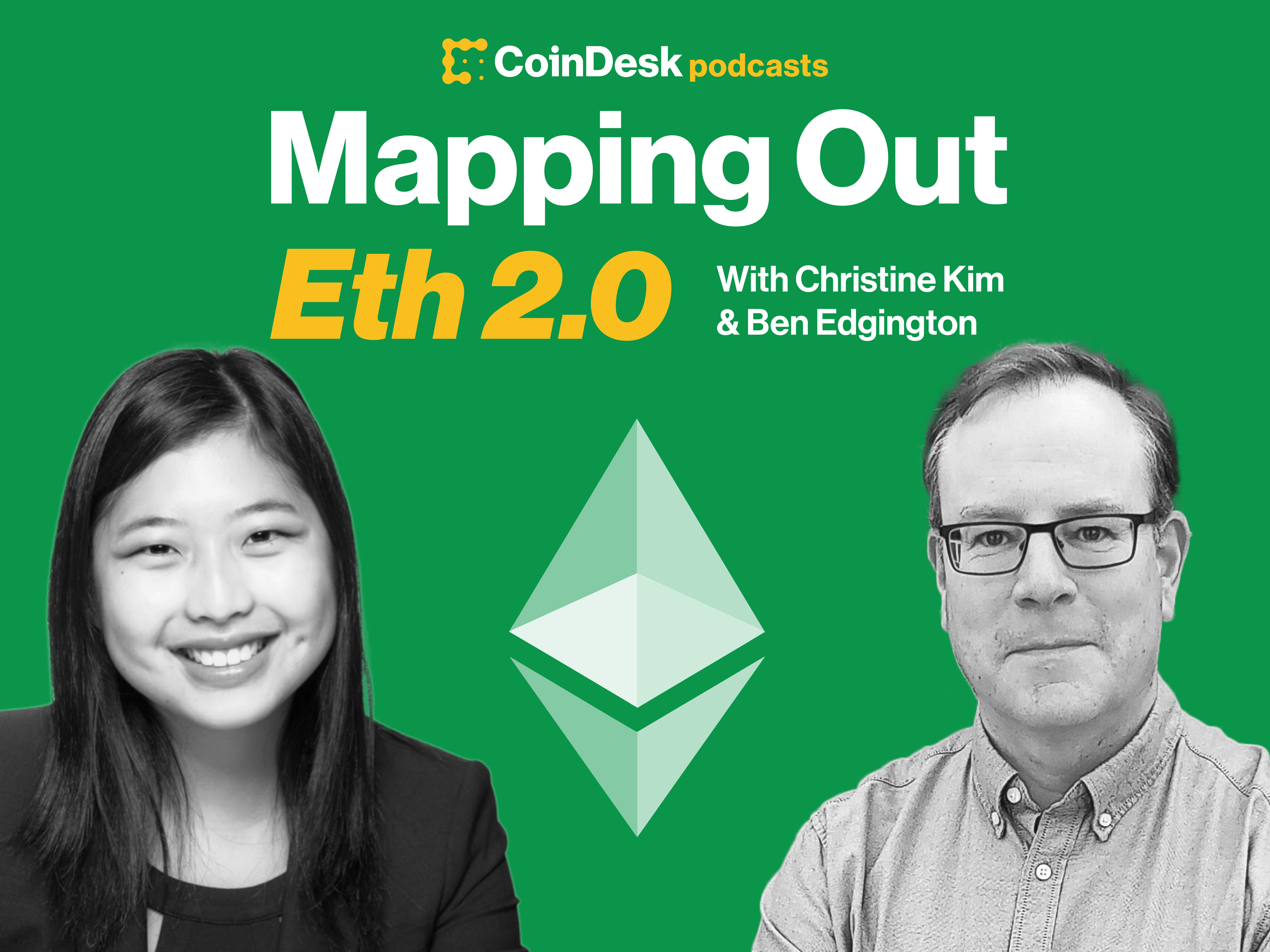In this week’s episode, CoinDesk’s Christine Kim and Consensys’ Ben Edgington discuss the activation of EIP 1559 on Ethereum’s test network Ropsten and two potential protocol-level changes impacting Ethereum 2.0 validators.
This episode is sponsored by Unique One Network and Mimo.
The London upgrade containing Ethereum’s fee market change, otherwise known as Ethereum Improvement Proposal (EIP) 1559, was activated Friday, June 25, on the Ropsten test network.
Kim noted early statistics about the activation of London on Ropsten, saying, “It looks like about over 80,000 testnet ETH was taken out of circulation, that is burned, as a result of EIP 1559. And the base fee, which is this new mandatory minimum fee payment required to send a transaction … was trending at about 100 gwei.”
If these figures were also seen on Ethereum after activation of London, it would mean average fee payments at minimum double from roughly 50 gwei to 100 gwei and about 30% of new coin issuance gets counterbalanced on the network through fee burning.
Edgington warned these figures shouldn’t be taken too seriously as the high gas prices on Ropsten are partially a result of deliberate spamming in efforts to battle test the upgrade for main network deployment.
“Also, Ropsten ETH is free, right? It’s costless. It’s testnet ETH. Sending a million transactions costs nothing except a bit of time so it differs from mainnet in that respect as well,” said Edgington.
Looking further down the road to upgrades on the Ethereum 2.0 Beacon Chain, Edgington and Kim discussed the recurring idea to potentially lower the amount of ETH required to become a network validator. While this would make it less costly for users to validate and earn rewards on Eth 2.0, it would also require an “immense” engineering effort on the part of protocol developers, according to Edgington.
“You can’t just change it to 16 ETH because what about all the people who have already got 32 ETH staked. They now have two validator entities. What a nightmare,” he said.
Kim also noted that changing the required amount of ETH for validators would not be a long-term solution for encouraging a greater number of validators given the price volatility of the crypto asset, as well as the protocol-level decisions that still need to be made about the overall size of the Eth 2.0 network.
Edgington and Kim also touched on the recent dispute between cryptocurrency custody provider Fireblocks and Eth 2.0 staking pool StakeHound. For the full overview on the dispute and what Eth 2.0 developers are considering to help users in similar situations, listen to this week’s episode of “Mapping Out Eth 2.0.”
Links mentioned in this podcast:
- Camila Russo’s The Infinite Machine (https://www.harpercollins.com/products/the-infinite-machine-camila-russo?variant=32123333836834)
- Matthew Leising’s Out of the Ether (https://www.amazon.com/Out-Ether-Amazing-Ethereum-Destroyed/dp/1119602939)
- Data about EIP 1559 on Ropsten (http://watchtheburn.com)
- Legal Dispute Between Fireblocks and Stakehound (/markets/2021/06/22/fireblocks-being-sued-for-allegedly-losing-over-70m-of-ether-report/)












